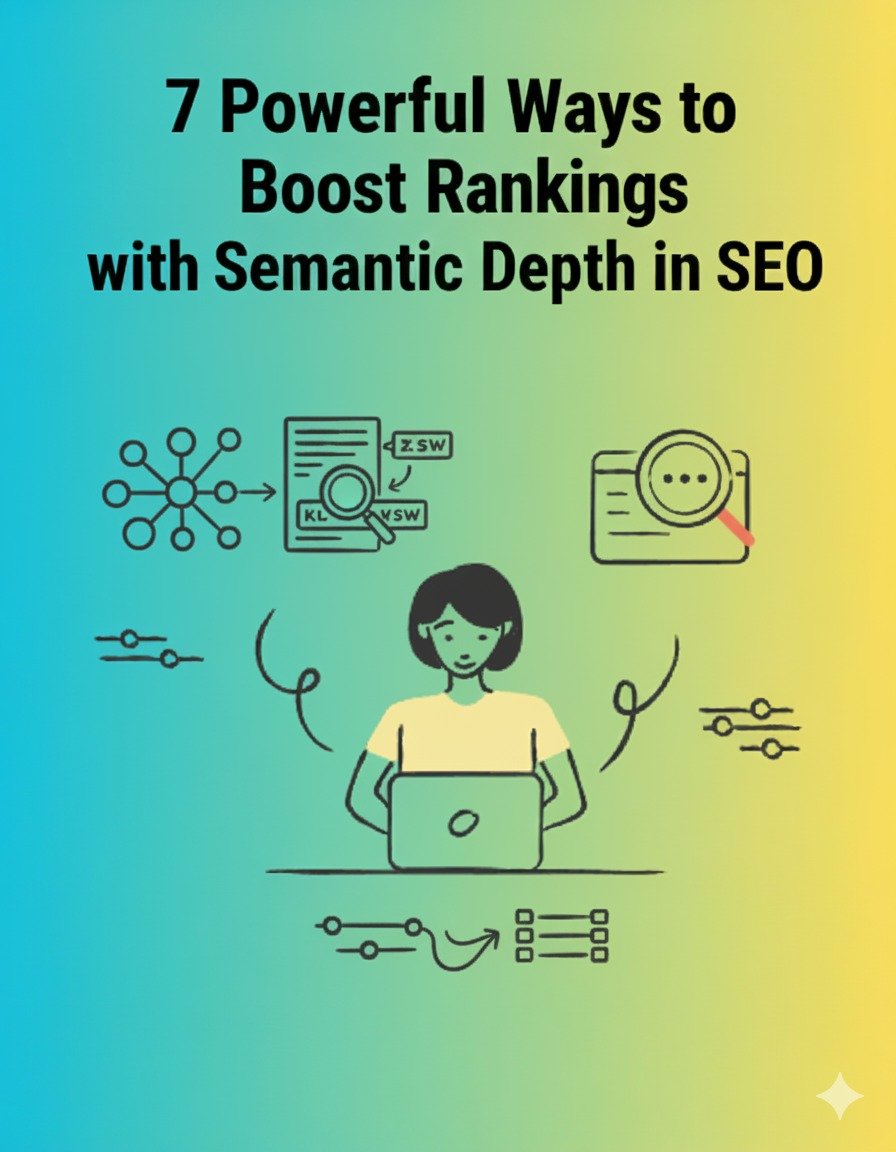Semantic Depth in SEO is transforming how search engines understand and rank content. The era of keyword stuffing and repetitive phrasing is long gone. Today, Google’s advanced algorithms such as RankBrain and BERT prioritize context and meaning over keyword frequency.
In simple terms, semantic depth means creating content that truly fulfills user intent, connects related ideas, and demonstrates subject expertise. When your content delivers semantic richness, it not only attracts visitors but also builds authority, improves engagement, and ensures long-term visibility.
Here are 7 powerful ways to boost your rankings by improving semantic depth in SEO.
1, Understand and Optimize for Search Intent
The foundation of Semantic Depth in SEO lies in understanding search intent. Every keyword represents a purpose, whether informational, navigational, commercial, or transactional. Crafting content that matches the intent behind a search query ensures users find exactly what they are looking for.
For instance, someone searching for best DSLR cameras for beginners wants comparisons, features, and price guidance. When your content covers all these aspects naturally, it achieves semantic completeness and improves dwell time.
Tip: Explore Google’s “People also ask” and “Related searches” to identify related queries and integrate them seamlessly into your content.
2, Use Topic Clusters to Strengthen Contextual Relevance
Topic clusters play a key role in enhancing Semantic Depth in SEO. Instead of creating isolated blog posts, focus on building interconnected content pieces that link back to a pillar page covering the main subject.
For example, if your pillar page discusses Digital Marketing, related cluster topics can include SEO Automation, Voice Search Optimization, or AI in Marketing. By linking them together, you help search engines understand the relationship between pages and boost topical authority.
Pro tip: Use semantic variations like “content relevance,” “contextual optimization,” and “semantic search” to diversify your clusters and improve contextual strength.
3, Implement Semantic Keywords and Entities
Modern SEO focuses on entities rather than exact-match keywords. Entities are concepts or objects that give context and meaning to a topic. Integrating semantic keywords and related entities into your content signals to search engines that your article offers comprehensive coverage.
If your primary keyword is AI in SEO, related entities could include machine learning algorithms, Google BERT, natural language processing, and search intent analysis. Incorporating these creates richer content and increases your chances of ranking for multiple queries.
Useful tools:
Google Natural Language API for detecting entities
SurferSEO or Clearscope for semantic keyword optimization
AlsoAsked.com for question-based variations
4, Enhance On-Page SEO with Structured Data
Structured data is another vital aspect of Semantic Depth in SEO. By adding schema markup to your content, you provide search engines with explicit clues about what each element represents. This improves how your content appears in search results and helps algorithms understand your page better.
Using schema can help your pages appear with rich snippets, star ratings, or FAQs, increasing visibility and click-through rates.
Common schema types:
Article Schema for blogs
FAQ Schema for question-based content
Product Schema for eCommerce pages
Local Business Schema for regional SEO
Why it matters: Structured data enhances contextual understanding and improves how search engines interpret your content’s meaning.
5, Write for Humans First, Algorithms Second
Semantic SEO works best when your content communicates naturally. Prioritize human readability, logical flow, and clarity rather than stuffing keywords. Search engines now evaluate how useful and conversational your content feels to readers.
For example, instead of writing Best SEO tools 2026 SEO software top tools, say Here are the best SEO tools in 2026 to help marketers optimize faster and smarter.
Google’s AI-driven updates reward content that feels authentic, relevant, and conversational. Always focus on clarity and intent over keyword repetition.
6, Build Topical Authority through Internal Linking
Internal linking is one of the easiest and most effective ways to create semantic depth. Linking related pages together helps users explore connected ideas while guiding search engines through your topic network.
If you have an article on Semantic SEO, link it to pages covering Entity Optimization, Search Intent Analysis, or Content Relevance. This not only improves user navigation but also reinforces your expertise on the topic.
Best practices:
Use descriptive anchor text that reflects context.
Link to deeper, informative pages, not just your homepage.
Maintain natural and contextual linking patterns.
Over time, internal linking builds topical authority, showing Google that your website is a trusted resource for that subject.
7, Leverage AI Tools for Semantic Optimization
AI-powered SEO tools have made it easier to create content with true semantic depth. From keyword research to readability enhancement, these tools analyze context and suggest meaningful improvements that align with user intent.
Recommended tools:
ChatGPT or Gemini for semantically rich ideas and outlines
SurferSEO for optimizing content depth and coverage
MarketMuse for identifying topic gaps and subtopics
Grammarly and Hemingway for improving readability and tone
These tools don’t replace creativity; they amplify it. Combining AI insights with human creativity helps you deliver content that resonates with readers and ranks well across multiple search intents.
Final Thoughts
Semantic Depth in SEO is not just a ranking technique; it is a strategic approach to building meaningful, user-focused content. By understanding context, linking related ideas, and optimizing for entities and intent, you can establish your brand as a credible source of information.
When executed effectively, semantic optimization results in:
Higher organic visibility
Improved engagement and retention
Increased trust and credibility
Long-term, sustainable traffic growth
As search engines continue to evolve toward understanding human context, adopting Semantic Depth in SEO will be key to maintaining visibility and authority. Focus on creating comprehensive, interconnected, and meaningful content that benefits both users and search engines.


